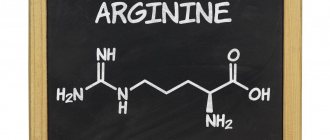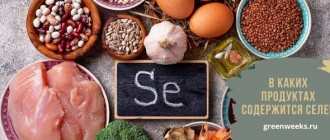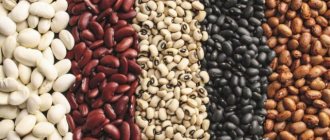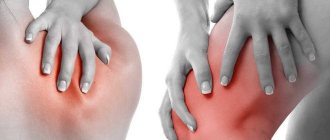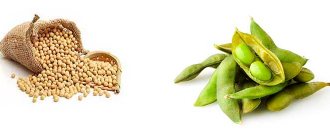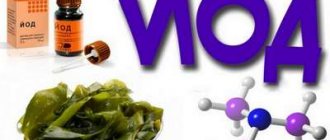Watercress
Watercress contains a significant amount of protein per calorie.
It is a plant of the cruciferous family that grows in water. It contains a high amount of protein per calorie. Watercress has the following protein content ():
- A standard 35-gram serving of watercress contains 0.8 grams of protein.
- 100 grams of watercress contains 2.3 grams of protein and 11 calories.
- Protein makes up 84% of its calories.
A 35-gram serving of watercress also contains 85 micrograms of vitamin K, which is almost 100% of the recommended daily intake for adults. This vitamin is important for healthy blood and bones ().
Watercress is a rich source of the powerful antioxidant vitamin C and also contains B vitamins, calcium, potassium and vitamin A.
In addition, watercress provides antioxidant protection. It also contains phenolic compounds that may help prevent cancer (, , , ).
Avoid cooking watercress as this will reduce its antioxidant content. Instead, eat raw watercress in salads, add it to sandwiches, or use it to make smoothies ().
Carbon
Carbon is an organogen element, without which the development of any living organism is impossible (in addition to carbon, hydrogen, oxygen, and nitrogen are organogens).
Interesting fact!
The human body is 18 percent carbon, which for an adult is about 12 kg of total weight. Moreover, all organic life on planet Earth, without exception, is a process whose chemical basis is carbon compounds. And if plants receive this substance from carbon dioxide in the air, then humans - from the tissues of both plant and animal organisms consumed as food.
Important!
Carbon obtained from food is used by the human body to form vein cells.
❧Which foods contain carbon?
Carbon, like oxygen, is present in all foods, but foods that contain large quantities of carbohydrates and fats are especially rich in it.

These products include:
- all types of fats;
- potato;
- corn;
- peas;
- sweet potato;
- Jerusalem artichoke;
[/td]
|
|
Interesting Facts!
Rice does not contain gluten (unlike other grains), so it can be consumed by people intolerant of protein grains. According to studies, rice enriched with carbohydrates can compensate for the deficiency of essential vitamins and minerals.
Alfalfa sprouts
Alfalfa sprouts contain very few calories but are rich in nutrients.
Alfalfa sprouts have the following protein content ():
- A standard 35-gram serving of alfalfa sprouts contains 1.3 grams of protein.
- 100 grams of alfalfa sprouts contain 4 grams of protein and 23 calories.
- Protein makes up 69% of the calories in alfalfa sprouts.
This vegetable is a rich source of vitamin K and a decent source of folate, iron, magnesium, phosphorus, zinc, copper and vitamin C.
Animal studies have shown that alfalfa sprouts may lower cholesterol levels. This may be due to their high levels of saponins. Saponins are a group of compounds that can lower cholesterol levels (,).
In an earlier study conducted in 1987, researchers gave 15 people with high blood lipid levels 40 grams of alfalfa seeds three times a day for 8 weeks. These people had a 17% reduction in total cholesterol and an 18% reduction in low-density lipoprotein or "bad" cholesterol ().
Research also shows that alfalfa sprouts may reduce inflammation, reduce menopausal symptoms and—thanks to their high vitamin K content—help prevent osteoporosis (, ,).
Albumen
Albumin (from Latin albus, meaning “white”) is the main protein in blood plasma, its role in the body can hardly be overestimated. The normal level of albumin in an adult is approximately 35-50 g/l, and in small children under 3 years old - about 25-55 g/l. It is synthesized in the liver, and every day about 12 g of this protein is produced in the human body. In addition, it is the only blood protein that does not contain carbohydrate residues.
Albumin helps to increase abnormally low levels of protein in the blood and reduces the volume of circulating blood, which is extremely important in states of shock and collapse.
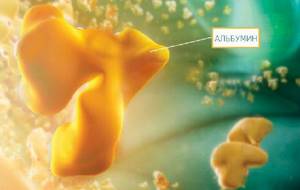
In addition, normal levels of albumin in the blood eliminate intestinal obstruction and help cope with nephrosis, cerebral edema, hepatitis and cirrhosis.
❧ What foods contain albumin?
Substances containing albumin are called albuminoids. These include, for example, chicken egg white, which contains albumin in its purest form. Egg yolk also contains albumin, but bound directly to a fatty substance.
Albumin is found in the following foods:
|
|
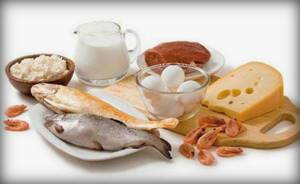
During the boiling process, albumin breaks down, but traces of it remain in the products.
Important! Albumins have received different names depending on the foods in which they are present. They found in eggs are simply called albumin. Muscle albumin, myosin or fibrin is present in meat. The same protein in bread is called gluten, and in vegetables such as peas, beans, lentils, beans - legumin and, finally, in milk and cheese - casein.
Spinach
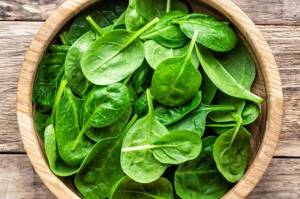
Spinach is one of the most nutrient-rich leafy green vegetables.
Spinach has the following protein content ():
- A standard 25-gram serving of raw spinach contains 0.7 grams of protein.
- 100 grams of spinach contains 2.9 grams of protein and 23 calories.
- Protein makes up 50% of its calories.
The protein in spinach contains all the essential amino acids. One 25-gram serving of spinach contains 121 mcg of vitamin K, which is just over 100% of the recommended daily intake for humans ().
Spinach is also a rich source of folate, vitamin A and vitamin C. It is a good source of magnesium, iron and potassium and a decent source of calcium.
Spinach contains plant compounds that may enhance antioxidant defenses and reduce inflammation ().
In one study, 10 athletes who took spinach supplements for 14 days showed reduced oxidative stress and reduced muscle damage after running a half marathon compared to those who took a placebo ().
In another study, researchers gave nitrate-rich spinach to healthy participants and measured its effect on levels of nitric oxide, which is a signaling molecule that dilates blood vessels. They also measured cell function and blood pressure.
They found that nitrate-rich spinach increased nitric oxide, improved endothelial cell function, and lowered blood pressure—all of which may improve heart health ().
Research has also linked eating spinach to a lower risk of certain types of cancer, including breast cancer ().
Proteins (proteins)
Proteins (or proteins), made up of amino acids, are molecules necessary for the formation of muscles, internal organs and systems, skin and hair. In addition, thanks to proteins, important biologically active substances are bound and transported into the cell. If we talk about the chemical component, then proteins are molecules that consist of amino acid residues.
Important!
In terms of nutritional value, proteins can be either complete or incomplete. In the first case, proteins contain all those essential amino acids that are not synthesized by the human body and, therefore, must be supplied to it with food. In the second case, proteins lack certain essential amino acids.
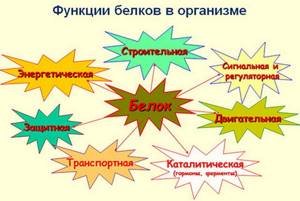
❧ Benefits of proteins
- Strengthening the immune system and resisting infectious diseases.
- Regulating hormonal balance.
- Ensuring the process of assimilation of fats, carbohydrates, vitamins, and minerals.
- Providing the body with energy (this is especially true in cases where the diet contains insufficient amounts of carbohydrates and fats).
- Normalization of digestion.
- Increased performance.
- Promoting blood clotting.
- Normalization of blood circulation.
- Regulation of metabolism.
- Construction of tissues in the body.
- Development and normal functioning of the muscular system.
- Normalization of cardiac activity.
- Ensuring normal growth and tissue regeneration.
❧ Daily protein intake
In general, protein requirements are determined individually and depend on key factors such as age, stress and intensity of physical activity. Thus, with age, the daily protein intake decreases, while with stress and regular physical activity, protein consumption should be doubled, since the above factors significantly increase protein metabolism.
In addition, the following categories of people should increase their protein intake:
- pregnant women;
- children;
- people in the process of recovery after serious illnesses.

Here is an approximate daily protein requirement for different categories of people:
- adults with energy expenditure in the range of 3000 – 3100 kcal (mainly mental work) – about 100 g;
- adults with energy expenditure of 3,500 kcal (fully mechanized physical labor) - about 120 g;
- adults with energy costs up to 4,000 kcal (mainly partially mechanized labor) – 130 – 140 g;
- adults with expenditures of more than 4,500 kcal (athletes and people involved in enterprises with non-mechanized physical processes) – 160.
Children (based on 1 kg of body weight):
- 3 – 7 years: 3 – 4 g;
- 7 – 10 years: 3 – 3.5 g;
- 10 – 14 years: up to 3 g;
- 14 – 17 years: 2 – 2.5 years.
❧ Protein deficiency
With a lack of proteins, the human body begins to break down its own protein, which subsequently leads to dystrophy and weakening of liver function.
Protein deficiency in childhood is especially dangerous, as it can cause the child to stop growing and developing.

❧ How to determine protein deficiency?
It is enough to pay attention to the following external changes:
- loss of muscle mass and increase in body fat, because with protein deficiency there is a slowdown in metabolism;
- fragility of hair, sagging skin and flaking nails: the fact is that the skin, hair and nails are almost entirely composed of protein, so if they lose their beautiful and healthy appearance, this eloquently indicates that the body does not receive enough protein;
- frequent colds: with protein deficiency, the functions of the immune system, which includes protein components, are weakened.
❧How to normalize protein metabolism?
To do this, you need to follow fairly simple rules:
- stop consuming semi-finished products, as well as shelf-stable meat products (we are talking about ham, sausages, sausages, in which the content of pure meat is minimal);
- minimize the consumption of fatty meats and fish (foods such as pork, beef breast, salmon, duck, goose and cod liver contain a large amount of fat, which complicates the digestion process and interferes with the full absorption of protein);
- include optimal sources of protein in your diet, including lean poultry, eggs, legumes, lean beef, cereals, and it is advisable to eat protein foods no later than 18 hours so that the body has time to fully absorb it overnight.
Important!
Both a deficiency and an excess of protein foods can have a negative impact on health, which can overload the digestive system and disrupt the functioning of the kidneys, which are the body’s natural filter.
Interesting fact!
The ancient Chinese practiced very cruel torture, inflicted on prisoners who were fed only boiled meat.
The result: the prisoners died in terrible agony. And all because the body is not able to process a large amount of protein at once, and, therefore, its remains simply clog the intestines, thereby disrupting its functioning. In addition, excess protein in the body negatively affects the functioning of the cardiovascular system and liver, not to mention the disruption of vitamin metabolism. Conclusion!
Balance is the unshakable basis of healthy and proper nutrition.
❧Which foods contain protein?
Protein foods provide the body with about 15 percent of the daily calorie intake.

It should be remembered that protein can be found in foods of both plant and animal origin. At the same time, consuming animal protein is more valuable, since the essential amino acids it contains are much easier to digest and dissolve. In plant proteins, some amino acids are insufficient (they may be absent altogether), while others may be present in excess. For this reason, it is advisable to eat a variety of foods so that the body receives all the types of proteins it needs.
Animal protein is found in meat, fish, milk, cheese, cottage cheese and eggs. Vegetable protein can be obtained from legumes, seeds, soybeans, buckwheat, beans, rice and millet. Vegetables and fruits also contain small amounts of protein.
The ideal source of protein for the human body is eggs, because this product contains all the essential amino acids. But! You need to know moderation in everything, and therefore it is not recommended to eat more than one or two eggs per day, so as not to overload the liver.
You should be careful when consuming red meat, which contains not only proteins, but also a large amount of saturated fat (it is this fat that contributes to the formation of excess bad cholesterol in the blood). Lean poultry can be an excellent alternative to red meat.
The greatest benefit will come from proteins that come into the body when consuming seafood, which is extremely low in saturated fat.
Important!
The rate of protein absorption directly depends on the type of product: thus, protein that comes with meat products takes a long time to digest, while protein contained in bread, cereals, and legumes takes the longest to digest.
Important!
Vegetarians who do not consume the main source of protein, which is meat, should pay special attention to their diet. The vegetarian menu must include legumes, soy, as well as nuts and seeds.
Chinese collard greens, or bok choy
Chinese collard greens, called bok choy, are also rich in protein.
Bok choy has the following protein content ():
- A standard 70-gram serving of shredded bok choy contains 1.1 grams of protein.
- 100 grams of bok choy contains 1.5 grams of protein and 13 calories.
- Protein makes up 46% of its calories.
Chinese kale is a rich source of vitamins A, C, and K. It is also a good source of folate and a decent source of calcium and potassium.
A number of studies have shown that Chinese kale is rich in compounds with antioxidant activity. Its outer leaves seem to contain most of the antioxidants. It may also have anti-inflammatory properties (, , )
Some research suggests that cabbage vegetables—a group that includes Chinese kale—may contain compounds that reduce the risk of prostate cancer ().
Additionally, an animal study found that taking bok choy powder supplements reduced the risk of liver cancer ().
People use bok choy in many Asian recipes, such as stir-fries, kimchi, soups, and spring rolls.
Daily protein intake
The consumption rate depends on several factors:
- body type;
- physical activity;
- food quality;
- exercise stress.

The average daily intake is 80-90 g for an adult. It depends on gender, age and physical activity, so the indicators in each case are calculated individually:
- Women. The norm is 60-90 g per day. For pregnant women, the rate increases 1.5 times. A deficiency of protein products can lead to intrauterine abnormalities.
- Men – 80-120 g. With constant physical activity, the norm increases to 150 g.
- Children. Preschool age - 3 g per 1 kg of weight, schoolchildren - 2.5 g per 1 kg. Protein deficiency can lead to dystrophy.
Protein distribution during the day
The minimum amount of these substances per day is 60 g. At the same time, the body is still able to function normally. But with increased physical activity, this amount will not be enough.
There are 2 options for daily consumption of such products. In 1 case, each meal contains the same amount of substances. With option 2:
- breakfast: 20%;
- snack: 5%;
- lunch: 45%;
- afternoon snack: 5%;
- dinner: 20%;
- snack: 5%.
The purpose of such nutrition is to prevent feelings of hunger, as this is harmful to the pancreas.
Asparagus
Asparagus is a very popular vegetable that is high in nutrients.
Asparagus has the following protein content ():
- A standard 135-gram serving of asparagus contains 3 grams of protein.
- 100 grams of asparagus contain 2.2 grams of protein and 20 calories.
- Protein makes up 44% of its calories.
Asparagus is a rich source of vitamin K and a good source of folate and riboflavin. It also contains some magnesium, phosphorus and vitamin A.
Asparagus may also have anti-inflammatory and anti-tumor properties ().
It also contains fructooligosaccharides, which have prebiotic properties, stimulating the growth of friendly gut bacteria (,).
You can roast, boil, steam or sauté asparagus, and it works well in salads and as a side dish.
Polka dots
Peas contain about 9 grams of protein per cup. It is also an excellent source of vitamins A, C, thiamine, phosphorus and iron. In addition, the large amount of B vitamins and folic acid in peas helps reduce the risk of cardiovascular diseases.
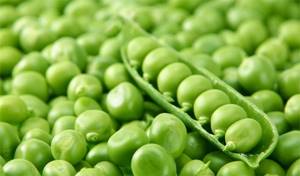
There's also 5.5 grams of fiber in each serving. Use these guys on a salad, make them a side dish for chicken, and add their favorite primavera pasta to your high-carb day.
Protein content: 8.6 g per cup.
Mustard greens
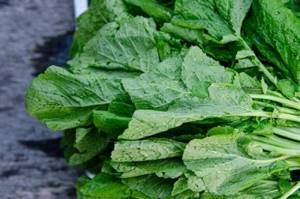
Mustard greens belong to the Brassica family. It is very similar to cabbage, but has a pronounced mustard taste.
Mustard greens have the following protein content ():
- A standard 55-gram serving of chopped mustard greens contains 1.6 grams of protein.
- 100 grams of mustard greens contain 2.9 grams of protein and 27 calories.
- Protein makes up 42% of its calories.
A 55-gram serving of mustard greens also contains 144 mcg of vitamin K, which is more than 100% of the recommended daily intake for humans ().
It is a rich source of vitamin C and also contains calcium, potassium and B vitamins. It is also a good source of vitamin E.
Mustard greens, like many other plants, contain phenolic compounds that give them antioxidant properties (,).
A test-tube study found that steaming mustard greens increased their ability to bind to bile acids. It may help you lower your cholesterol levels ().
The same study also found that steaming may have similar beneficial effects on collards, kale, kale, green peppers and broccoli.
You can steam, boil or stir-fry mustard greens, or you can simply eat them raw.
The role of protein compounds for the human body
The role of polypeptides is very diverse. The main function should be noted as the construction role in human growth. They are the structural basis of all tissues of the human body - skin, bones, muscles. When playing sports related to muscle building, an increased supply of proteins should be ensured as a building material. An equally important transport role is the delivery of oxygen to the brain and other organs. Hormones and enzymes are made up of polypeptides, without which food cannot be digested. Finally, protein compounds form the basis of the immune system, which protects a person from the harmful influence of external and internal factors. Therefore, a lack of these beneficial substances can lead to dire consequences.
Cabbage
Kale is a dark green, leafy vegetable in the same family as kale, broccoli, and cauliflower.
Collard greens have the following protein content ():
- A standard 35-gram serving of chopped kale contains 1.1 grams of protein.
- 100 grams of kale contains 3 grams of protein and 32 calories.
- Protein makes up 38% of its calories.
Its vitamin K content is especially noticeable - 157 mcg per 35 gram serving. This is about 131% of the recommended daily intake for humans ().
It is also rich in vitamin C and folate, is a good source of calcium and contains some potassium.
As another member of the Brassica family, kale is a good source of phenolic compounds and antioxidants (,).
Research has linked the high levels of antioxidants in kale to a reduced risk of prostate cancer ().
One study found that people who eat cruciferous vegetables, such as kale, are less likely to be diagnosed with breast cancer ().
Kale can also bind to bile acids in the intestines, which helps lower cholesterol levels. One study found that steaming increased this effect ().
You can enjoy collard greens steamed or sautéed. It is especially tasty mixed with other vegetables, including onions and mushrooms.
Beneficial properties of protein and its effect on the body
Functions of amino acids:
- Transport. Delivery of fats, vitamins and microelements to cells is ensured.
- Catalytic. Some of the amino acids are essential elements, without which biochemical reactions in the body cannot take place.
- Protective. Some types of proteins are antibodies that support immunity.
- Construction Amino acids serve as material for creating new cells and restoring existing ones.
In order for the body to absorb protein, the food consumed along with it must contain vitamin C.
Proteins play an important role for the human body, but they act in combination with fats, carbohydrates and vitamins. Thanks to peptides, these substances can even be converted into each other. Therefore, the main thing in nutrition is balance.

Broccoli
Broccoli is a very popular vegetable that also contains protein with all the essential amino acids. You can enjoy it raw or cooked.
Broccoli has the following protein content ():
- A standard 90-gram serving of chopped broccoli contains 2.5 grams of protein.
- 100 grams of broccoli contains 2.8 grams of protein and 34 calories.
- Protein makes up 33% of its calories.
Broccoli is a very rich source of vitamins C and K, a good source of folate, and a decent source of phosphorus and potassium. It also contains some calcium.
Broccoli also contains high levels of plant compounds and flavonoids such as kaempferol. They can have antioxidant, anti-inflammatory and antitumor effects ().
Like all cruciferous vegetables, broccoli is high in glucosinolates. These are compounds that may help reduce the risk of cancer ().
Also like mustard greens, broccoli has a greater ability to bind to bile acids when steamed, so eating steamed broccoli may help lower blood cholesterol levels ().
In addition, broccoli may help improve liver health by stimulating detoxification and the production of antioxidant compounds in the liver ().
You can steam, fry, bake or sauté broccoli. It is also good for making soups and sauces, or using as a side dish.
Hydrogen
It must be said that hydrogen as a separate element has no biological value. For the human body, it is precisely those compounds that it contains that are important (we are talking about water, proteins, fats, carbohydrates, vitamins). And the main compound of hydrogen is water (recall that a water molecule consists of one oxygen atom and two hydrogen atoms).
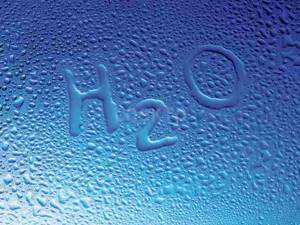
Interesting Facts!
The body of a healthy person contains about 55–65 percent water, while the blood contains about 80 percent, so the human body reacts extremely painfully to water imbalance. Losing only 8 percent of water from the total body weight causes fainting, but if a person loses more than 20 percent of moisture, then he faces inevitable death.
❧Which products contain hydrogen?
Hydrogen is contained in almost all products, and especially in green vegetables, juicy fruits, and milk. But most of the hydrogen comes, of course, with water, the deficiency of which in the body leads to a decrease in tissue turgor, dry skin and mucous membranes, increased blood concentration and arterial hypotension.
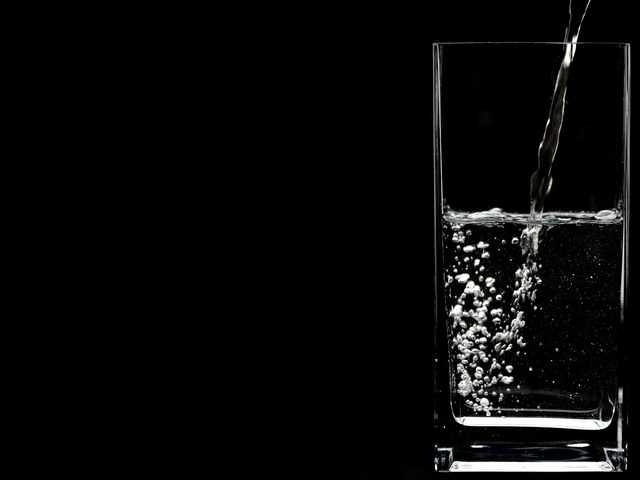
Interesting Facts!
A person can live without water for no longer than 10 days (and this is provided that he lies motionless in the shade, where the air temperature will vary between 16 - 23 degrees, whereas as the temperature rises, life expectancy will shorten). In the desert, and even under the rays of the scorching sun, a person unprotected by clothing will die from dehydration within 24 hours.
Brussels sprouts
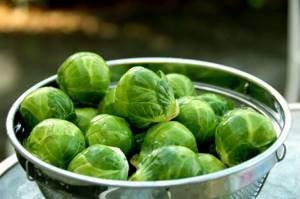
Brussels sprouts are a great addition to most diets. It is a good source of protein, fiber and vitamins.
Brussels sprouts have the following protein content ():
- A standard 90-gram serving of Brussels sprouts contains 3 grams of protein.
- 100 grams of Brussels sprouts contain 3.4 grams of protein and 43 calories.
- Protein makes up 31% of its calories.
A 90-gram serving of Brussels sprouts contains 3.3 grams of fiber. It is also very rich in vitamins C and K and is a good source of folate and vitamin B6. It is also a decent source of iron and potassium.
One animal study found that eating Brussels sprouts promoted the growth and health of gut bacteria and stimulated the production of short-chain fatty acids in the intestines ().
You can cook Brussels sprouts by boiling, steaming, grilling, or sautéing and frying. It goes well as a side dish.
Soya beans
They are the richest type of legume in protein: Cooked soybeans provide about 28 grams of protein per cup, which is about the same amount of protein as 150 grams of chicken. More importantly. soybeans are one of two plant proteins that contain all the amino acids. The second is considered quinoa.
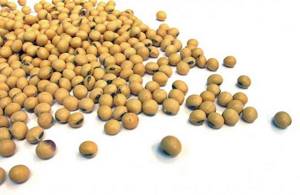
A serving of soybeans also contains 17 grams of carbohydrates and 15 grams of fat, 58 of which are unsaturated fatty acids. The fiber in beans improves gut health, and the unsaturated fats are good for cardiovascular health.
Protein Content: 28.6 g per cup (brewed).
Cauliflower
Like broccoli, cauliflower contains a large amount of protein for the number of calories it has.
Cauliflower has the following protein content ():
- A standard 105-gram serving of cauliflower contains 2 grams of protein.
- 100 grams of cauliflower contains 1.9 grams of protein and 25 calories.
- Protein makes up 31% of its calories.
Cauliflower is a rich source of vitamin C and a good source of vitamin K. It also contains some calcium, iron, magnesium and phosphorus.
Cauliflower also contains high amounts of a glucosinolate compound called sinigrin, which may have anti-cancer, antioxidant, and anti-inflammatory properties ().
The glucosinolate content of cauliflower can be significantly reduced when you cook it. Therefore, cauliflower may be healthier when eaten raw ().
However, cauliflower also contains many other antioxidants that are retained during cooking and their levels may even increase after steaming or baking ().
Like some of the other vegetables on this list, cauliflower can lower cholesterol levels through its ability to bind to bile acids. Steaming cauliflower increases this ability ().
Cauliflower is a versatile vegetable that can be used in a variety of recipes. In many cases, it can replace starchy carbohydrates such as pasta or bread.
Hemoglobin
Hemoglobin is a complex iron-containing protein, thanks to which oxygen is transferred to tissues, and, therefore, the normal functioning of the human body as a whole is maintained.
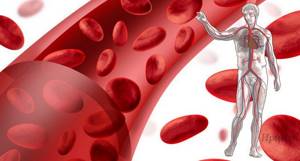
There are certain standards for hemoglobin content, depending on the age and gender of the person.
Children
| Women
Men
|
A lack of hemoglobin in the blood is manifested by general weakness, fatigue, drowsiness, frequent headaches and low blood pressure.
To maintain normal hemoglobin levels, it is enough to include foods rich in iron and animal protein in your diet.
❧ What foods contain hemoglobin?
Foods that increase hemoglobin:
|
|
|
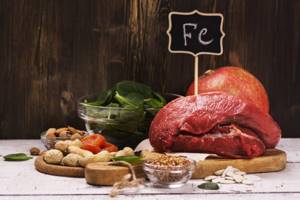
Interesting fact!
The most popular mushroom is considered to be champignon, which has excellent taste characteristics. But this mushroom is not only tasty, but also healthy, as it contains fiber, vitamins, and minerals. It is also important that champignons have very little sodium, which is why this product is included in salt-free diets. In addition, champignons do not contain sugar or fat, so they can be consumed by diabetics.
Important!
Iron in the human body is absorbed in the greatest amount from products of animal origin (about 6 percent), while only 0.2 percent of this macroelement enters the blood from plant foods. For example, an apple contains a lot of iron, which is practically not absorbed by our body. At the same time, apples contain many vitamins that promote the absorption of iron.
What food should you choose?
Protein-rich foods can be used for weight loss, but you need to choose low-calorie foods. In addition, the diet should always contain fiber, as it prevents sugar from being stored in fat and normalizes intestinal function. You can’t eat protein foods alone, otherwise changes in metabolism will occur. Such a diet can lead to various kinds of disorders, for example, weakening of bones.
Protein-rich plant foods include fruits, vegetables, legumes, nuts, and grains.
Vegetables and legumes
Protein is found in large quantities in vegetables, especially if they are green (spinach, Brussels sprouts, broccoli, asparagus, etc.). This substance is also found in many legumes: peas, lentils, chickpeas, beans.
Benefits of including legumes in your diet:
- Satisfaction of products. A small portion of such food allows you to not feel hungry for a long time.
- Minimum fat content.
- They are rich in fiber and complex carbohydrates, which contribute to weight loss.
Benefits of eating vegetables:
- Even in large quantities they do not cause harm to health.
- No feeling of hunger. Low calorie content allows you to make large portions and at the same time lose weight.
- Low cost, especially in the summer season.
- Vegetables cleanse the body, increase immunity, and normalize digestive processes.
- The variety of products allows you to prepare new dishes every day.
- Lost weight after such a diet does not come back.
It will not be possible to eat in this mode all year round, because in winter vegetables lose most of their beneficial properties.
Fruits
Fruits that contain large amounts of protein include apricots, dates, avocados, bananas, and passion fruit. The nutrients contained in such foods are beneficial for healthy hair and skin.
Fruits can be consumed in the form of smoothies, salads and juices. It is advisable to eat them fresh to get the maximum amount of vitamins.
Mushrooms
The proportion of protein in mushrooms ranges from 2.5 to 3.5%. The exception is the porcini mushroom. The amount of amino acids in it is greater than in potatoes. In dried form, this mushroom surpasses even beef and fish in protein content.

In addition, mushrooms contain a lot of vitamins and mineral salts. They are low in calories if they are not fried, but you cannot eat such food all the time. Mushrooms are contraindicated for people with stomach problems. To avoid discomfort, you need to eat them in limited quantities.
Mushrooms contain chitin, a substance that slows down the digestion of food, making them difficult to digest. You should not eat overgrown mushrooms, as they can accumulate harmful substances. Mushroom caps contain more nutrients than stems. After drying, the caloric content of products increases.
How to compensate for the lack of protein for vegetarians
Vegetarianism is considered a correct nutritional system if it is balanced, that is, protein foods are present in the diet. The absence of meat in the menu can be compensated for with vegetable protein:
- Dairy products. They are beneficial due to the optimal balance of amino acids. Whey has good digestibility. 500 ml of milk contains 1/3 of the daily protein requirement.
- Eggs. They are well absorbed and contain a complex of vitamins, micro- and macroelements.
- Cereals. They contain a lot of carbohydrates and minerals.
Among the plant sources of amino acids, corn stands out, which also contains fatty oils, mineral salts and selenium. This product is useful even in canned form. Corn is a preventative against atherosclerosis. Potatoes are also appreciated by vegetarians.

Food will be healthy only if the products are correctly combined. Some can be combined, while others are better consumed separately. For example, dairy products go with everything except eggs. The latter are best not consumed with corn, nuts and bread. Eggs can be eaten along with potatoes and legumes.

